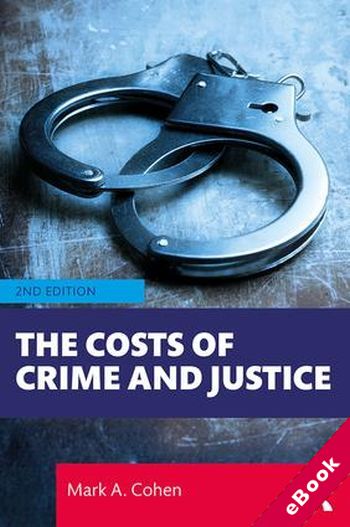
The device(s) you use to access the eBook content must be authorized with an Adobe ID before you download the product otherwise it will fail to register correctly.
For further information see https://www.wildy.com/ebook-formats
Once the order is confirmed an automated e-mail will be sent to you to allow you to download the eBook.
All eBooks are supplied firm sale and cannot be returned. If you believe there is a fault with your eBook then contact us on ebooks@wildy.com and we will help in resolving the issue. This does not affect your statutory rights.
This book presents a comprehensive view of the financial and non-financial consequences of criminal behavior, crime prevention, and society’s response to crime. Crime costs are far-reaching, including medical costs, lost wages, property damage and pain, suffering, and reduced quality of life for victims and the public at large; police, courts, and prisons; and offenders and their families who may suffer consequences incidental to any punishment they receive for committing crime.
The book provides a comprehensive economic framework and overview of the empirical methodologies used to estimate costs of crime. It provides an assessment of what is known and where the gaps in knowledge are in understanding the costs and consequences of crime. Individual chapters focus on victims, governments, as well as the public at large. Separate chapters detail the various methodologies used to estimate crime costs, while two chapters are devoted to policy analysis – both cost-effectiveness and benefit-cost analysis. The second edition is completely updated and expanded since the first edition in 2005. All cost estimates have also been updated. In addition, due to a significant increase in the number of studies on the cost of crime, new chapters focus on the costs to offenders and their families; white-collar and corporate crime; and the cost of crime estimates around the world.
Understanding the costs of crime can lead to important insights and policy conclusions – both for criminal justice policy and other social ills that compete with crime for government funding. Thus, the target audience for this book includes criminologists and policy makers who are seeking to apply rigorous social science methods to assist in developing appropriate criminal justice policies. Note that the book is non-technical and does not assume the reader is conversant in economics or statistics.